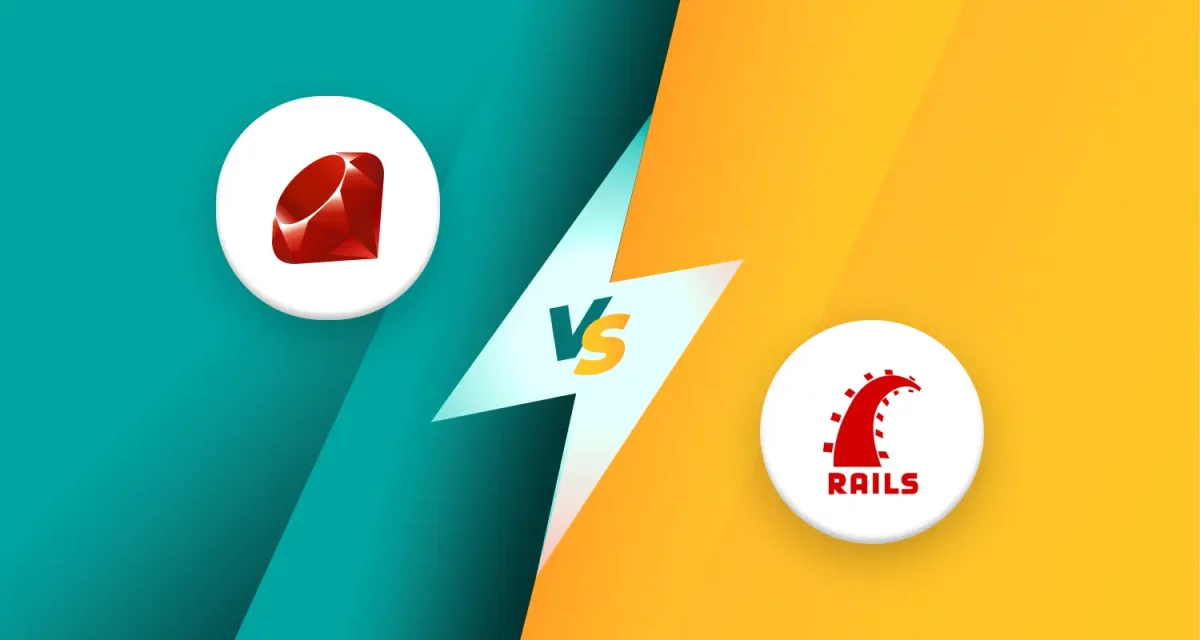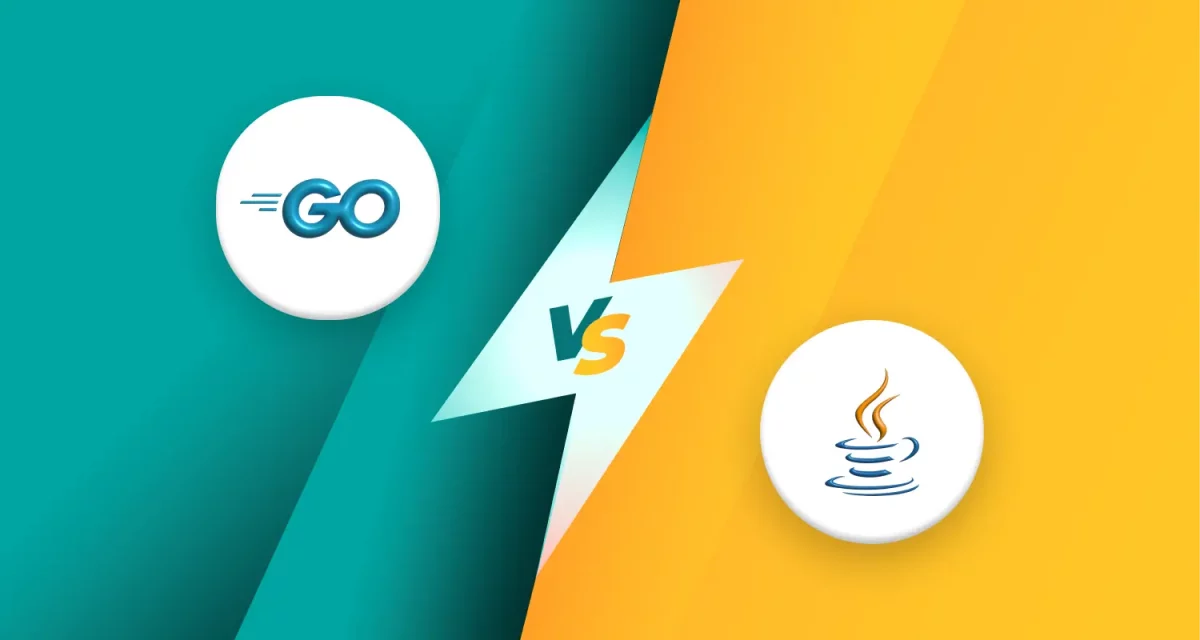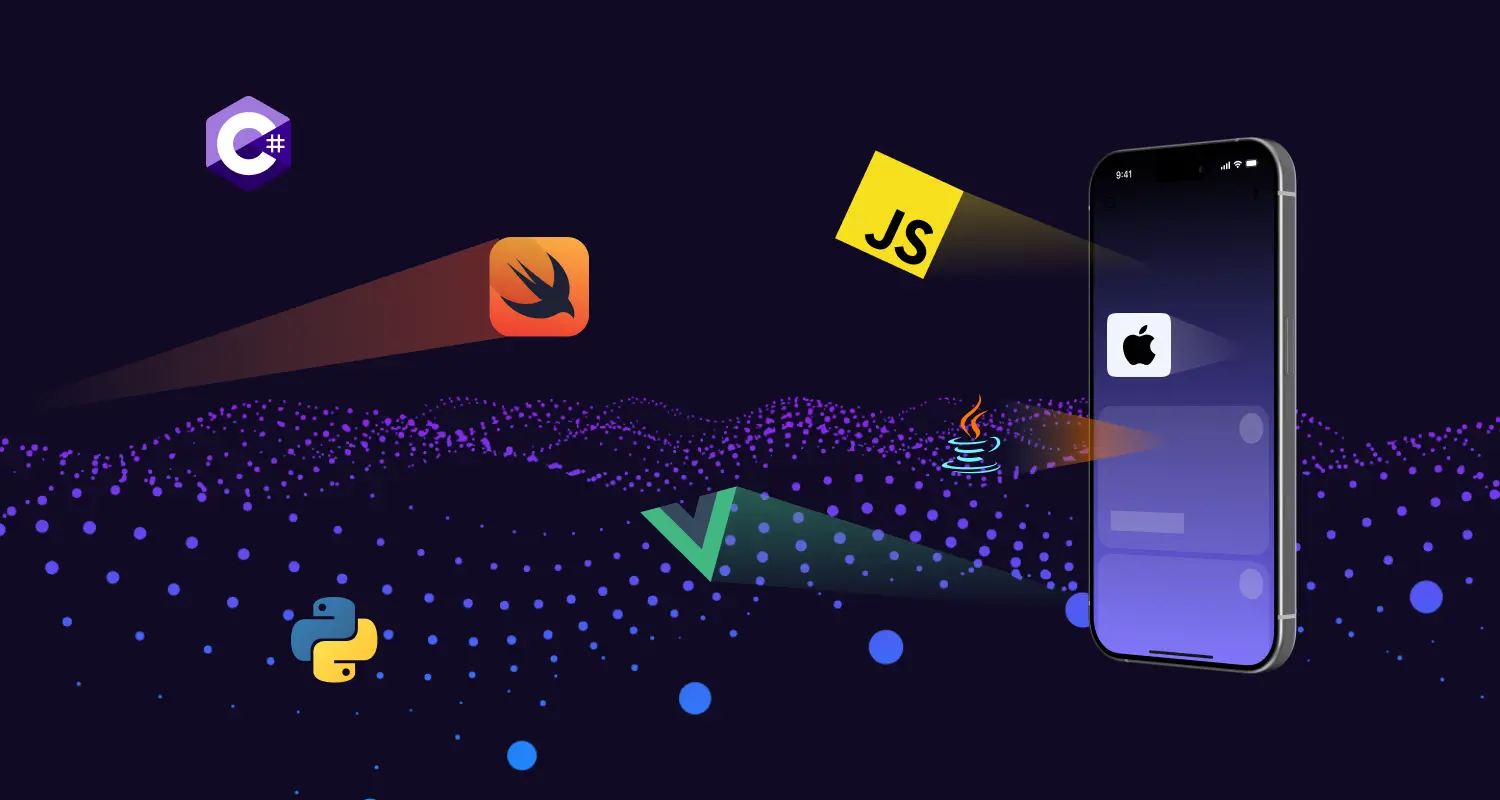
Picking the right iOS programming language is crucial for app performance, security, and user experience. For years, Objective-C was the standard, but now Swift is the top choice for iOS development.
Some developers also use cross-platform frameworks like React Native, Flutter, and Xamarin to build apps for both iOS and Android. This article will cover the best programming languages for iOS app development in 2025, comparing Swift vs Objective-C, and exploring cross-platform options to help you make the best choice.
1. What is an iOS programming language?

An iOS programming language is used to build apps for Apple devices like the iPhone and iPad. It provides the instructions that tell an app how to function, ensuring smooth performance, security, and a great user experience.
1.1. The evolution of iOS development languages
In the early days, Objective-C was the main programming language for iOS. It was powerful but complex, with a steep learning curve.
In 2014, Apple introduced Swift, a modern language designed to be faster, safer, and easier to use. Today, Swift is the primary choice for iOS development, but many older apps still rely on Objective-C.
Besides native languages, developers now use cross-platform frameworks like React Native, Flutter, and Xamarin to create apps that work on both iOS and Android. These options offer flexibility but may not match the performance of native iOS development languages like Swift and Objective-C.
2. Best programming languages for iOS app development
Choosing the right iOS programming language is crucial for building efficient and high-quality apps. While Swift is the dominant programming language for iOS, Objective-C still has a role in maintaining older applications. Additionally, cross-platform frameworks like React Native, Flutter, and Xamarin offer alternative solutions for developers looking to build apps for both iOS and Android.
2.1. Swift
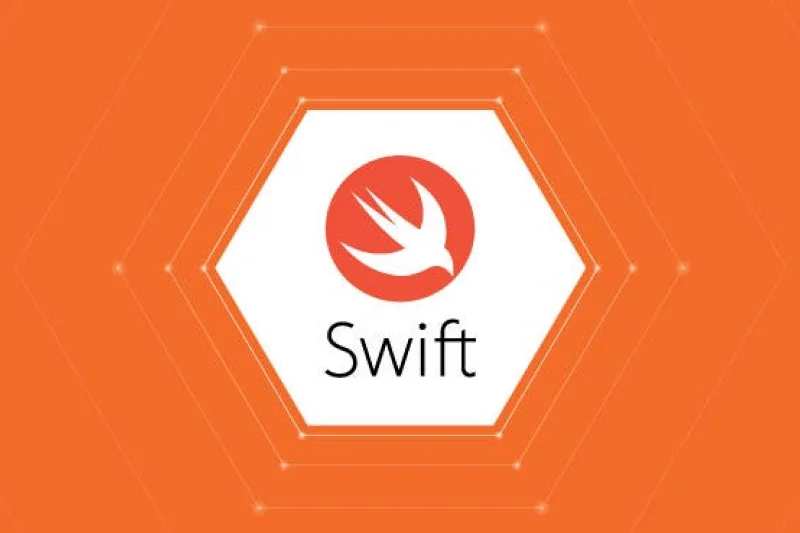
2.1.1. Introduction and history
Swift is Apple’s official iOS development language, introduced in 2014 to replace Objective-C. It is widely recognized as the best language for iOS app development, offering speed, safety, and ease of use. Today, it is the top choice for building high-performance iOS apps.
Apple created Swift with three main goals:
- Safety: It reduces common programming errors, such as null pointer crashes.
- Performance: Swift is optimized for speed, making apps run smoothly.
- Ease of use: Its clean syntax is beginner-friendly, allowing developers to write readable and maintainable code.
2.1.2. Key features and advantages
- Safety first: Swift eliminates entire classes of bugs by enforcing strict type safety and automatic memory management.
- Concise and readable syntax: Compared to Objective-C, Swift has a modern and simplified structure, making development faster.
- High performance: Apps written in Swift are significantly faster than those in Objective-C, improving user experience.
- Strong community support: Apple continuously improves Swift, and its open-source nature allows developers to contribute to its growth.
- Seamless integration with Xcode and Cocoa Touch: Swift works perfectly with Apple’s development tools, making the app-building process smoother.
2.1.3. Notable apps developed with Swift
Many leading iOS apps are built with Swift, including:
- Airbnb
- Lyft
These apps showcase Swift’s efficiency in handling large-scale applications with a great user experience.
2.2. Objective-C
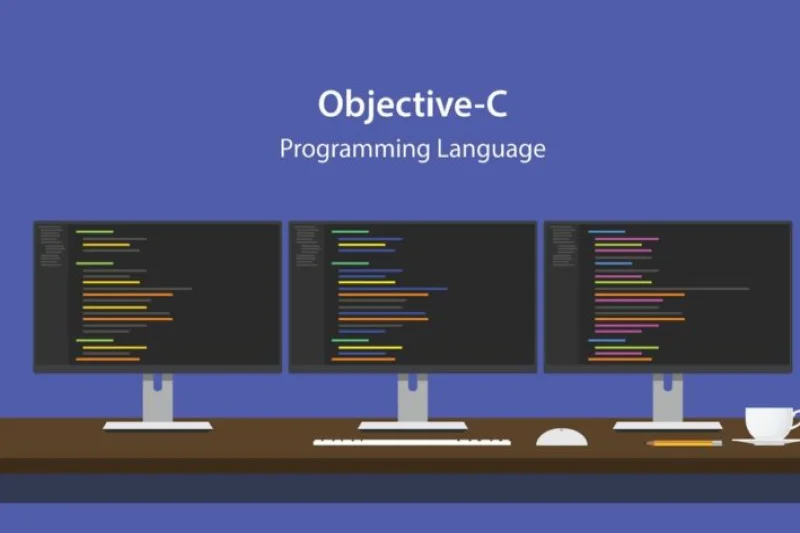
2.2.1. Introduction and history
Before Swift, Objective-C was the primary iOS programming language for decades. It was first introduced in the 1980s and later adopted by Apple for iOS development.
While Swift has largely replaced Objective-C, many older apps and frameworks still rely on it. Developers maintaining legacy applications continue to use Objective-C, ensuring compatibility with existing codebases.
2.2.2. Key features and advantages
- Runtime flexibility: Unlike Swift, Objective-C allows dynamic method resolution, making it more flexible in certain scenarios.
- Dynamic typing: It supports runtime type checking, which can be beneficial for certain applications.
- Massive codebase: Since thousands of iOS apps were originally written in Objective-C, developers who work with older projects still need to understand it.
2.2.3. Notable apps developed with Objective-C
Despite its decline, several major iOS apps were built with Objective-C, including:
- Facebook (early versions)
- Dropbox
- Snapchat (legacy codebase)
Many of these apps have since transitioned to Swift, but they still contain Objective-C components.
2.3. Cross-platform languages and framework
While Swift and Objective-C are the main iOS programming languages, many developers choose cross-platform frameworks to build apps that work on both iOS and Android. These app development frameworks allow developers to write code once and deploy it across multiple platforms, saving time and effort. The most popular cross-platform options include Xamarin, React Native, and Flutter.
2.3.1. C# with Xamarin
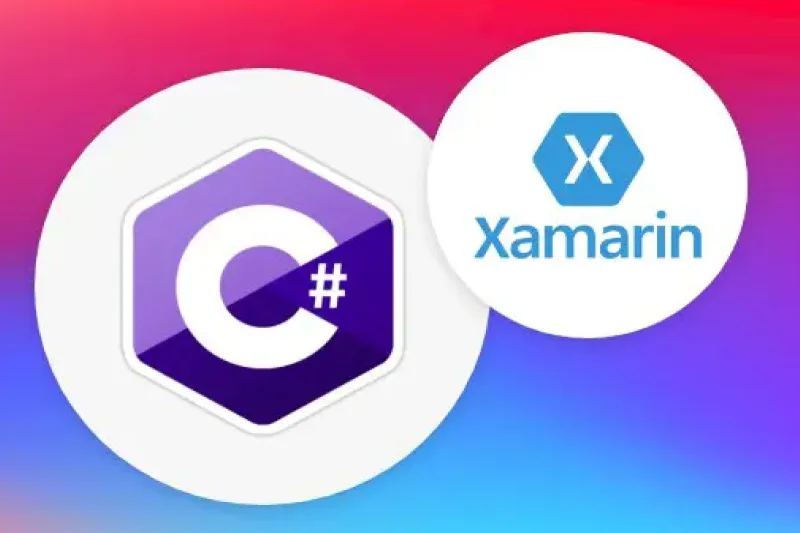
Xamarin, developed by Microsoft, enables developers to create native iOS apps using C#. It works with .NET and allows seamless integration with Apple’s iOS SDK.
- Advantages of Xamarin
- Code sharing across platforms – Developers can write up to 90% of the code once and use it for both iOS and Android.
- Native performance – Unlike some other cross-platform solutions, Xamarin compiles apps natively, making them as fast as those built with Swift or Objective-C.
- Integration with .NET ecosystem – Businesses using Microsoft technologies can easily integrate their iOS apps with existing systems.
- Limitations of Xamarin
- Larger app size – Apps built with Xamarin are usually larger due to additional libraries.
- Limited access to native features – Although it supports iOS development, some Apple-specific features require additional coding
2.3.2. JavaScript with React Native
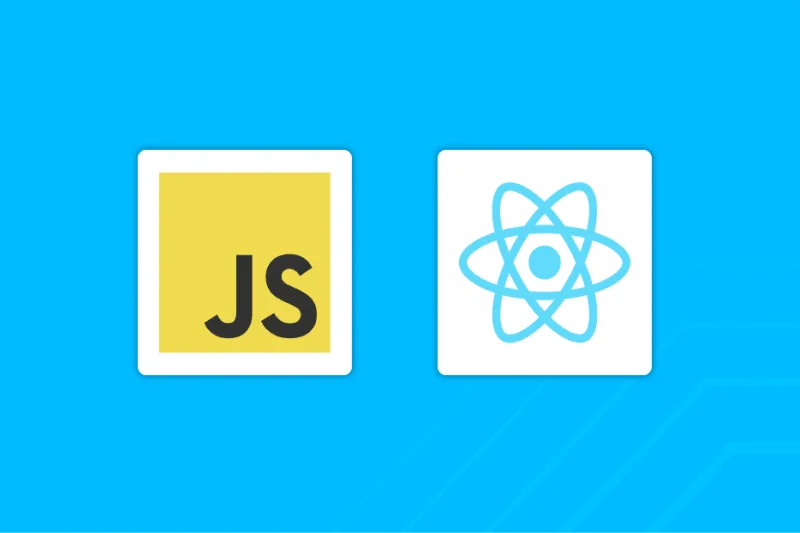
React Native, created by Facebook, allows developers to build iOS apps using JavaScript. It has gained massive popularity because of its fast development cycle and strong community support.
- Advantages of React Native
- Write once, use everywhere – A single codebase works for both iOS and Android.
- Hot reloading – Developers can see changes instantly without recompiling the entire app, making development faster.
- Strong community support – Many developers contribute to React Native, providing plugins and solutions for common issues.
- Limitations of React Native
- Performance overhead – Since it uses a JavaScript bridge to interact with native code, React Native apps can be slower than those built with Swift.
- Limited native capabilities – Some iOS-specific features require native modules, which means developers may still need Swift or Objective-C expertise.
Read more: TypeScript vs JavaScript – Which Is Better for Your Project?
2.3.3. Dart with Flutter

Flutter, developed by Google, allows developers to create visually appealing iOS apps using Dart. It is known for its beautiful UI, high performance, and cross-platform capabilities.
- Advantages of Flutter
- Customizable UI – Comes with pre-designed widgets that make apps look stunning on both iOS and Android.
- Fast development – The hot reload feature allows developers to make quick changes without restarting the app.
- Same UI across platforms – Unlike other frameworks, Flutter provides a consistent user experience on different devices.
- Limitations of Flutter
- App size – Flutter apps tend to be larger due to the framework’s built-in widgets.
- Limited native integration – While it supports iOS development, some Apple-specific features require extra customization.
2.3.4. Advantages and limitations of cross-platform development
- Advantages
- Code reusability – Developers can write one codebase and use it for both iOS and Android, saving time and effort.
- Faster development – Frameworks like React Native and Flutter speed up the mobile app development process with features like hot reload.
- Cost-effective – Businesses can reduce development costs by hiring fewer developers and maintaining a single codebase.
- Limitations
- Performance trade-offs – Cross-platform apps may not match the performance of native apps built with Swift or Objective-C.
- Customization challenges – Some iOS-specific features require additional coding, reducing the benefits of code sharing.
- Dependency on third-party tools – Since Apple continuously updates iOS, cross-platform frameworks must constantly adapt, sometimes causing compatibility issues.
3. Choosing the right language for iOS app development projects

Selecting the best iOS programming language is crucial for building a successful app. Your choice impacts performance, user experience, development speed, and long-term maintenance. Whether you choose Swift, Objective-C, or a cross-platform framework like React Native, Flutter, or Xamarin, depends on several factors.
3.1. Factors to consider
3.1.1. Project requirements
The nature of your iOS app will determine the best iOS development language. Consider the following:
- App complexity: Simple apps may work well with cross-platform solutions like React Native or Flutter. More complex apps with advanced animations, high-performance needs, or deep Apple ecosystem integration should use Swift or Objective-C.
- Performance needs: If your app requires fast processing, heavy graphics, or real-time features (e.g., gaming apps or AR applications),
- Feature set: Some Apple-specific features (e.g., Siri integration, Apple Pay, Face ID) require deep native support, making Swift or Objective-C the better option
3.1.2. Team expertise
Your development team’s experience plays a big role in choosing the right programming language for iOS.
- Swift is beginner-friendly – If your team is new to iOS development, Swift is easier to learn and has better documentation.
- Objective-C is for experienced developers – If your team has experience with older iOS apps, they might prefer Objective-C.
- Cross-platform frameworks (React Native, Flutter, Xamarin) require web or C# expertise – If your developers specialize in JavaScript (React Native), Dart (Flutter), or C# (Xamarin), they may prefer a cross-platform solution.
3.1.3. App complexity: Native vs. Cross-platform development
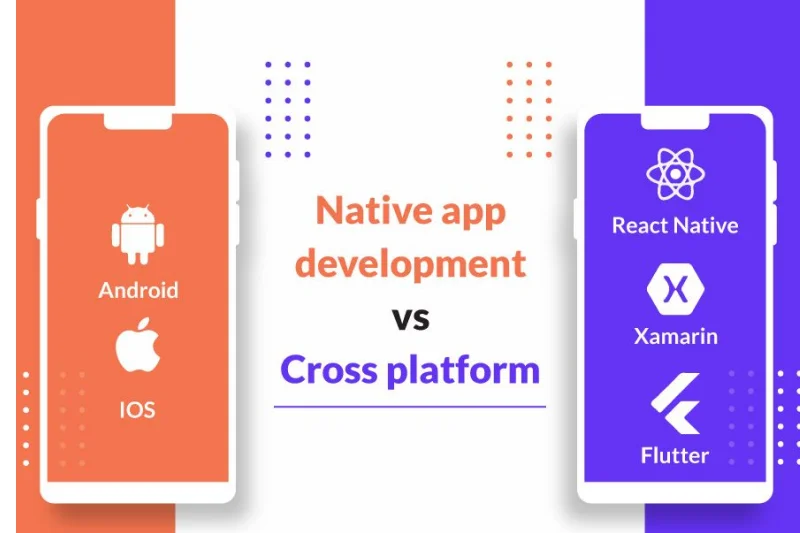
Understanding the differences between native and cross-platform development is essential.
- When to choose native development (Swift/Objective-C)
- High performance – Native apps run faster and offer better efficiency. If you need low latency and high responsiveness, go with Swift.
- Advanced iOS features – Some Apple features, such as Cocoa Touch, Xcode, and App Store optimizations, work best with Swift or Objective-C.
- Scalability & long term support – If you plan for future updates, native development ensures full compatibility with iOS updates.
- Security – Banking, healthcare, and enterprise apps need high security, which Swift provides through built-in safety features.
- When to choose cross-platform development (React Native, Flutter, Xamarin)
- Faster development – Cross-platform frameworks allow developers to write once and deploy to both iOS and Android, reducing development time.
- Lower costs – Businesses on a budget may prefer React Native or Flutter to avoid hiring separate teams for iOS and Android.
- Consistent UI across platforms – Flutter and Xamarin provide uniform UI/UX across different devices, reducing design inconsistencies.
- Best for MVPs (minimum viable products) – If you’re testing a product idea, a cross-platform approach speeds up deployment and reduces costs.
3.2. Which language should you choose?
The best iOS development language depends on your project needs:
- Swift is the top choice for modern iOS development, ensuring performance, security, and deep Apple integration.
- Objective-C is useful for maintaining older codebases but is being phased out in favor of Swift.
- Cross-platform frameworks (React Native, Flutter, Xamarin) are ideal for projects targeting both iOS and Android, reducing costs and development time.
By considering app complexity, performance needs, and team expertise, you can choose the right language for iOS app development projects
4. Conclusion
For modern iOS programming language development, Swift is the best choice, offering performance, security, and seamless integration with Apple. Objective-C remains relevant for maintaining older apps, while cross-platform frameworks like React Native, Flutter, and Xamarin provide flexibility for multi-platform projects.
If you’re starting a new project, use Swift. For legacy apps, stick with Objective-C. If you need rapid prototyping or a cross-platform solution, React Native, Flutter, or Xamarin are great options.


